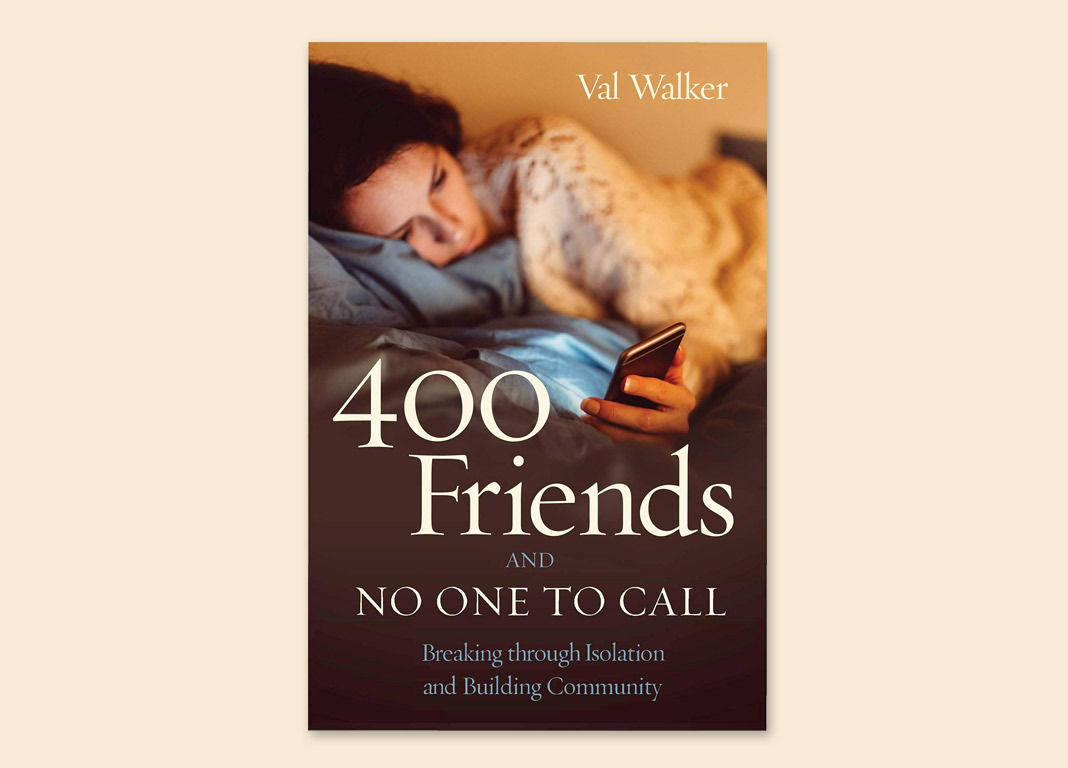Val Walker, a rehabilitation counselor, joined Literary Thursdays recently to talk about her book addressing loneliness and isolation, two timely subjects during the pandemic. She explained that the pandemic tested her to live her book’s advice on how to overcome isolation as she lives alone and lost half her business in 2020. She misses interaction and social contact through work and volunteering, such as smiles, touches, and hugs.
Walker provided statistics and demographics on the loneliness epidemic as it stood before the pandemic. 53% of Americans say they don’t have meaningful conversations on a regular basis. One in five say they don’t have anyone to confide in, a number that has tripled since 1985, when it was one in fifteen. 83% are annoyed when others pick up the phone while talking to them and 45% feel it has hurt their relationships. People are 2X as likely to die if they are chronically lonely and are at greater risk of illnesses including Alzheimer’s, heart disease, anxiety, and depression. On Meetup.com alone, there are 2,000 groups for social anxiety.
During the pandemic, there have been 800% more calls to crisis lines and mental health services. A 31% increase has been reported in anxiety and a 26% increase in depression. Those with disabilities and serious illness are more likely to be isolated as are those who live alone or who have had a sudden income loss. Money, Walker says, isolates, if you don’t have it. Others who are likely to be isolated include full-time caregivers, those in rural areas, people without transportation, those who are grieving, and people who have relocated.
It’s important to understand the difference between isolation, which is a lack of contact, and loneliness, which is perceived isolation. Internal and external factors can keep you from making contact or connecting. Pandemic inertia is real, says Walker, from collective grief and loss of lifestyle and activities. Uncertainty, she says, is isolating. And during the pandemic, when we have no plans, uncertainty is magnified.
Walker’s book profiles fifteen people and tells her own story of overcoming loneliness and isolation after a medical procedure. That experience is what sparked her curiosity about isolation – she says that curiosity and caring can help with isolation. We can transform our loneliness by caring for others. It also can help to find a cause, a purpose or a mission – by volunteering you can find others in common situations. The thing that isolates you, in this way, can unite you. Walker also advocated for support groups where you can find people who understand you. Be pro-active, show up, and keep going. She suggested several sites that can help you get started with volunteering and groups including VolunteerMatch.org, Idealist.org, UnitedWay.org, and Meetup.org. During this time of sensory deprivation, Walker suggested giving handmade gifts, knitting, making clothes, and doing crafts so that those you gift the items to can have part of you that they can touch and enjoy.
Breaking out of isolation takes commitment and courage, but it can be done. Building a support system can be a years-long endeavor, but it is well worth it.
400 Friends and No One to Call: Breaking Through Isolation and Buiilding Community is available as a book and an e-book.

